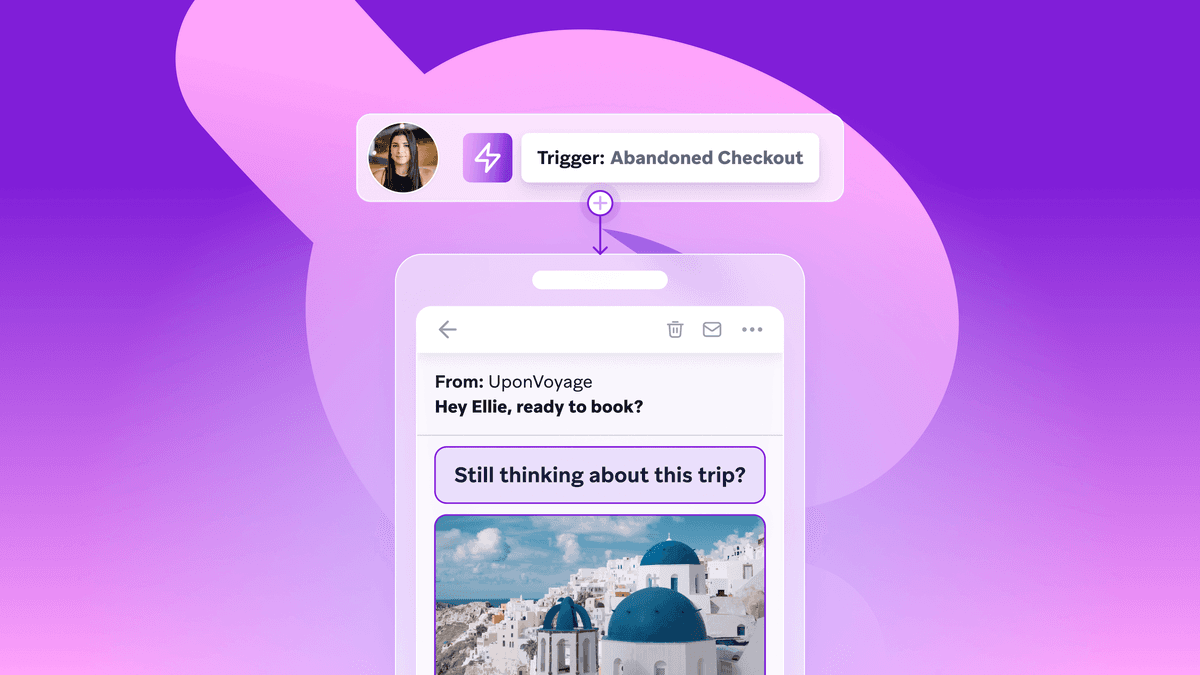The Definitive Checklist for Any Mobile Marketing Campaign ✅
Published on August 10, 2016/Last edited on August 10, 2016/6 min read


Team Braze
Today’s mobile marketers not only have to conceptualize and get team buy-in on a campaign, they also have to choose the proper mobile channels, monitor the campaign’s success (or not), suss out the important realizations from a heap of data, iterate, learn, grow, adjust, and be nimble all the way through. To say nothing of the rest of what’s required of mobile marketers on a day to day basis.
At Appboy, we help marketers deploy and scale campaigns all the time. This to-do list is meant to help organize the tasks of creating and monitoring your campaign, stage by stage.
Prepare for launch
Evaluate what engagement means to you, for this campaign. From there, define your conversion goals.
For our purposes, engagement means creating compelling experiences for your user, such that they’re inclined to respond to your efforts by taking the actions you want them to take. So… what actions do you want them to take? Is this campaign about buying, signing up for a newsletter, sharing something in their social space, something else?
What will get them there, and what conversion milestones can you measure along the way to be sure your ship is on the right course?
If you’re acquiring users, which users do you want to acquire?
Consider volume versus value. Are we acquiring as many users as possible? Or are we targeting fewer users of high value who are in a position to share the details of this campaign with their followings?
If you’re acquiring newbs, create an onboarding checklist.
Or use ours. You’ve defined what engagement and conversion look like; you know who to target. If this were a party, you’d have your decorations and your invitation list. So, what happens when your guests ring the bell? Will you offer them a cocktail, take their coat? Have a plan for how to onboard your new users in a way that’ll keep them coming back.
Define a few key metrics and set up testing.
Identify which key figures will be most important to defining success for this particular campaign. Knowing that will enable you to collect the right customer data from the start. Also determine what your testing will look like so you can adjust course along the way. If you need some support to accomplish each of these key metrics, we have resources for you:
Launch and engage
Choose the best channels with a multichannel approach.
There are four major mobile marketing channels: email, push notifications, News Feed Cards, and in-app messages. Various combinations of these channels, and their sub-channels (like web push notifications, for example), will work well for different types of campaigns.

Your approach doesn’t have to be all omnichannel omni-time (see what we did there?), but just using email or just using push rarely hits the nail on the head. Here’s an example of what a multichannel campaign can look like.
Prepare to capture the right audience.
Segment your users so you know exactly who you’re reaching out to.
Personalize your messages based on the knowledge you glean from segmenting.
Optimize send time so that your messages go out when users are most likely to engage.
Consider targeting based on location to reach users in certain areas.
Check your calendar. Messages yield better results when they’re sent in context. Context can mean all sorts of things (like weather, something pop culture related, a holiday). If it’s happening in the month of your campaign, you might be able to ride the wave to drive more engagement.
Watch and learn
Now it’s time to observe and learn. Depending on the overall length of the campaign, you’ll want to give yourself enough time to watch results come in before you start tweaking things. Book time to explore insights, like:
Take a look at your multivariate campaigns.
Is your data useful yet? Is there a clear winner among the options of CTAs, button colors, headlines? You don’t want to get caught in a testing/re-testing loop, running the same tests over again. Begin to note key takeaways.

Refer back to how you defined engagement at the beginning of the campaign.
You defined a set of actions you wanted your users to take. Are there results? Are users respond to your efforts by taking the actions you want them to take? Compare this campaign to similar campaigns. What can you learn by comparison?
Make adjustments
Prepare to modify your campaign.
One of the greatest benefits of up-to-the-moment-stats in a robust CRM is the ability to monitor and adjust in real time. If what you’re tracking doesn’t align well with your engagement goals, this stage is a great time to think about how to adjust your campaign to turn the boat more purposefully toward what you hope to achieve with this campaign. This might mean you got something wrong. No biggie! Be agile. Be low ego. Be willing to have gotten it not quite right.
Modify your campaign.
Once you’ve decided on the best ways to modify your campaign in order to best point your efforts toward your goals, begin implementing those changes.
Rinse, repeat, stop: when to end a campaign
Don’t allow tests to go on for too long: Getting a complete picture of a campaign’s behavior over a full week is often important, since users behave quite differently on Monday versus Saturday; but sometimes a few weeks are all you need to know your answer or to hit your target. If you’re running a test, see if your platform includes a way to see when you’ve reach statistical significance. Once you have, you know which variant is performing better and you can stop the test.
Don’t quit a test before the magic happens: A multi-message campaign that a user goes through over the course of days and weeks should be seen at least through to the maximum duration of the campaign before any adjustments are made. Some message campaigns, for example, can have negative short term effects with overwhelmingly positive long tail effects, so that the overall effect of the campaign is positive.
Know when the party is over: If you’re running a one-off promotion, it’s easy to know when to end it. Otherwise, you should end a campaign when you either understand that one variant is clearly outperforming the others variants, or, when despite testing, you can’t find a statistical difference between your options.
Be Absolutely Engaging.™
Sign up for regular updates from Braze.
Related Content
View the Blog
The power of mobile app automation: Benefits, use cases, and best practices

Team Braze

Customer onboarding automation: Benefits, strategies, and best practices

Team Braze

Moving beyond demographics to true understanding: Key insights from Grow with Braze Seoul 2025
